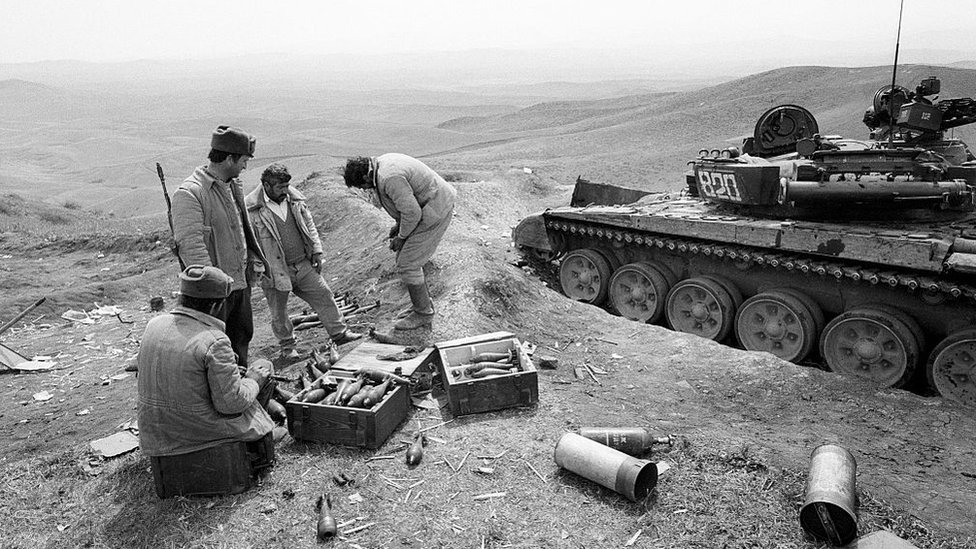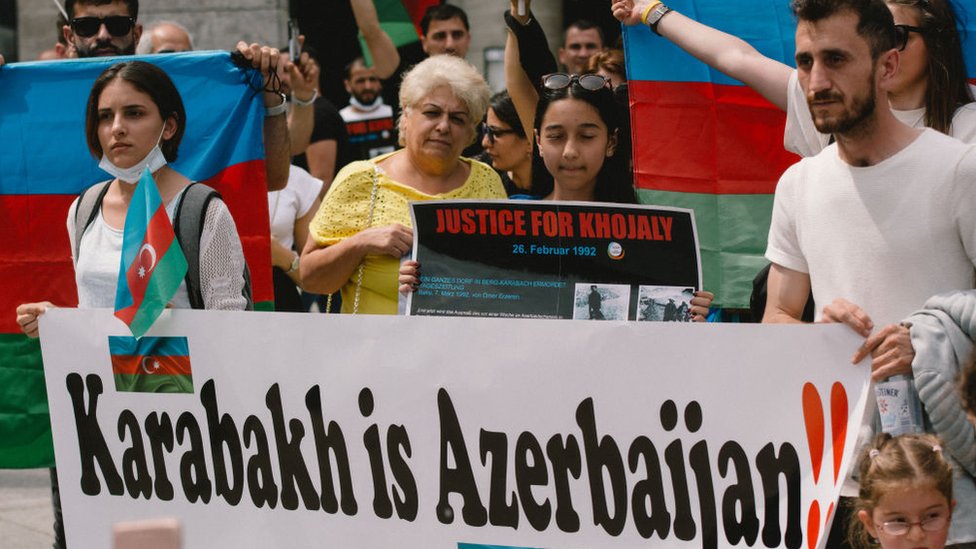 image copyrightGetty Images
image copyrightGetty ImagesFighting has erupted once more between Armenia and Azerbaijan, two former Soviet Union republics in the Caucasus region.
At the heart of the decades-old conflict is the Nagorno-Karabakh region. It is recognised as part of Azerbaijan, but it is controlled by ethnic Armenians.
The countries fought a bloody war over the region in the late 1980s and early 1990s. Although they declared a ceasefire, they have never managed to agree a peace treaty.
The conflict in 300 words
Armenia and Azerbaijan were part of the Soviet Union, a communist nation that existed between 1922 and 1991.
Both lie in a strategically important area of south-east Europe called the Caucasus. The countries border Turkey to the west, Iran to the south, and Georgia to the north. Russia also borders Azerbaijan to the north.


Armenia is a majority Christian country, while oil-rich Azerbaijan is a majority Muslim nation.
During the Soviet era, Nagorno-Karabakh was an ethnic-majority Armenian region controlled by Azerbaijan’s authorities. As the Soviet Union began to collapse in the late 1980s, Nagorno-Karabakh’s regional parliament voted to become part of Armenia.
This led to ethnic clashes, and – after Armenia and Azerbaijan declared independence from Moscow – a full-scale war. Tens of thousands died and up to a million were displaced amid reports of ethnic cleansing by both sides.
Armenian forces gained full control of Nagorno-Karabakh before a Russian-brokered ceasefire was declared in 1994. After that deal Nagorno-Karabakh remained part of Azerbaijan, but has been governed by ethnic Armenians backed by the Armenian government.


Peace talks have taken place since then mediated by the OSCE Minsk Group – a body set up in 1992 and chaired by France, Russia and the United States.
But so far, they have not agreed a peace treaty. Clashes have continued throughout the past three decades, with the last serious flare up in 2016 killing dozens of troops on both sides.
Armenia meanwhile has good relations with Russia. There is a Russian military base in Armenia, and the two countries are members of a military alliance, the Collective Security Treaty Organization (CSTO).
Related Topics
Click Here to Visit Orignal Source of Article https://www.bbc.co.uk/news/world-europe-54324772


